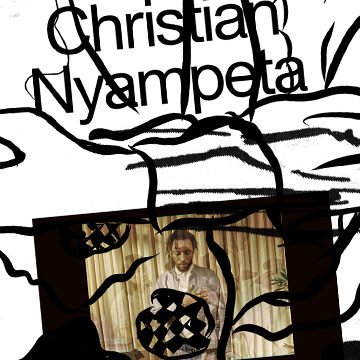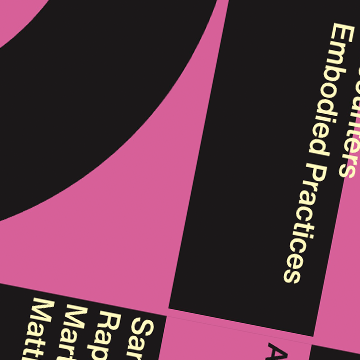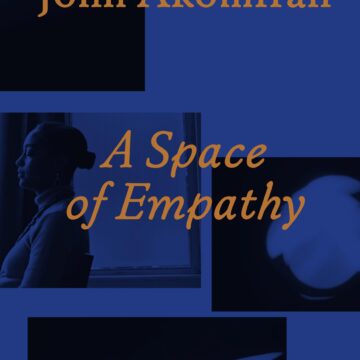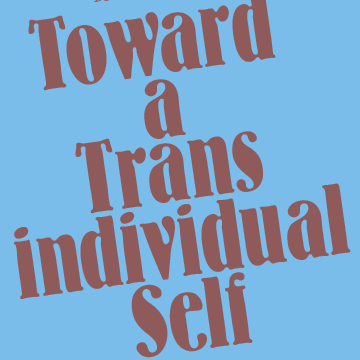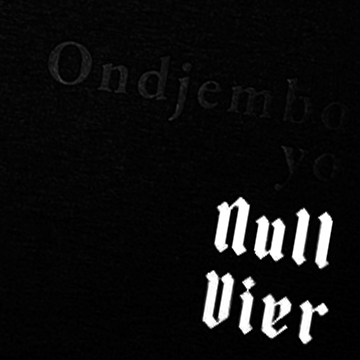The photographer, the wanderer, glides softly in the crush of the everyday, stepping out onto awkwardly paved sidewalks, weaving through crowds, seeking out moments of quiet serendipity. It’s in happenstance, coincidence, that the magic becomes immanent, the constantly weaving, liminal threads taking shape, becoming momentarily visible, forming into occurrences that vibrate, are.
Category: Titles
On a wildflower lined gravel track off a quiet thoroughfare…
It is unclear where ghost stories begin and where they end. On a wildflower-lined gravel track off a quiet thoroughfare… retraces them as ghost histories that move beyond incantations of superstitious provenance, to recognise ghosts as agitators of social memory insisting on unresolved grievances.
ants walk two ways
A collective publication resulting from a research project led by Sophie Orlando and Katrin Ströbel that takes as its starting point the way in which current geopolitical, economic and social changes induce a renewal and adjustment of artistic strategies, by investing, in an intersectional perspective, contextual thinking and feminist, queer and postcolonial thinking in an artistic and conceptual way.
Night Heron
—
Steeped in the living of rupture, the strength and fragmentation of memory, and the layering of life and art-making, Night Heron weaves together two parallel stories of women artists. Twenty-first century Bengali-American artist, Pakhi, floats through the world on a non-quest that takes her to New York City, Berlin, and Bujumbura; nineteenth century Bengali writer, Mrinalini, lives in a joint family home in a declining Lucknow, persistently finding time and space to write. At the heart of the novel is Pakhi’s choice to leave her son, an uneasy decision that is mirrored in Mrinalini’s ambivalence regarding her own education and what doors are opened and possibly closed for herself and her children as a result of it.
Film Undone
Film Undone presents contributions introducing unmade and unfinished film projects, film ideas realised in non-filmic media, as well as films that remained unseen in their intended form and at their intended time.
Passage – a song
What do we hear? Can we hear the stories that emanate from the visual information? Are we projecting from our memories or closing our ears to the cries? Can we hear the noise of the place or the deafening silence? What is the sound we hear in silence?
Entangled – Texts On Textiles
What does it mean to be a curator who writes, and, more specifically,
how can curators write about textiles?
Togetherward
Togetherward is a volume assembling new and existing documents that revisit, mix and remix moments in the work of artist Christian Nyampeta. The volume is composed of material that exceed singular authorship, in the form of texts, images, film stills, footnotes, photographs, poetry, and translations.
Encounters – Embodied Practices
What potential do embodied practices offer for emancipatory movements? How can community be created through these practices, and what responsibilities does this entail? What role does the body play in the preservation and transmission of knowledge?
Toward A Transindividual Self
Toward a Transindividual Self is an ambitious and capacious effort to theorize a new way to approach collectivity for political purposes through the lens of performance. Convinced that the current neoliberal conjuncture has only heightened a form of capitalist individualism that blocks notions of the social, the authors aim to show that a “transindividual formation of the self can bring about different courses of action and a more socially driven imagination.”
O Quilombismo Handbuch
Das O Quilombismo Handbuch ist die unentbehrliche Begleitpublikation zur gleichnamigen Ausstellung. Darin finden sich Werkinformationen und Abbildungen aller gezeigten Arbeiten, vertiefende Informationen zu den beitragenden Künstler*innen sowie Lagepläne und Skizzen der Ausstellungsräume. Zwei einleitende Essays führen in die Philosophie des Quilombismo und das Konzept der Ausstellung ein.
K̶-Artists
There has been a recent surge of global interest in Korean arts and popular culture, as evidenced by neologisms such as K-pop, K-drama and K-classic. Korean contemporary art has also captured the attention of a growing number of international biennales, exhibitions and fairs, attracting an international audience to Korea’s local artists and the scene they comprise. This is where our questions begin: despite a growing sense of nationalism in the global political stage, through a post-postmodernist lens, national categorization appears anachronistic. Is the prefix ‘K’ then a mere political ploy and capitalist commodity? If ‘K’ were to be removed, on the other hand, how else might we attempt at providing a portrait of the changing currents in Korea’s art scene? Is collective categorization or generalization ever worthwhile, and if so, to what extent can it be done without reducing or marginalizing individuals?
Fraitaxtsēs sores tsîn ge ra≠gâ / Ondjembo yo Null Vier
Genocide in Namibia is an especially sensitive matter—its history has at times been ignored, underestimated, or even denied outright.
In the artistic documentary Fraitaxtsēs sores tsîn ge ra≠gâ - Ondjembo yo Null Vier, Ixmucané Aguilar has worked in close collaboration with Nama and OvaHerero people who vividly evoke memories and rituals of mourning caused by human loss and land dispossession under Imperial Germany’s violent occupation.
O Quilombismo Reader (DE)
Der Reader zum Projekt O Quilombismo: Von Widerstand und Beharren. Von Flucht als Angriff. Von alternativen demokratisch-egalitären politischen Philosophien, wendet sich an Leser*innen mit Interesse an den konzeptionellen Hintergründen und den kuratorischen Linien der Ausstellung: Auflehnung, Befreiung, Spiritualität, Ekstase, neue kulturelle Formen und ästhetische Paradigmen, Interpretationen von Kollektivität und Quilombo als Queering.
O Quilombismo Reader (EN)
This reader, published on the occasion of the project O Quilombismo: Of Resisting and Insisting. Of Flight as Fight. Of Other Democratic Egalitarian Political Philosophies, brings the themes of the eponymous group exhibition to those interested in wider conceptual explorations around its multifaceted curatorial threads: insurgence, resistance, liberation, spirituality, ecstasy, new cultural forms and aesthetic paradigms, quilombo as queering, and the reimagination of collectivity.







